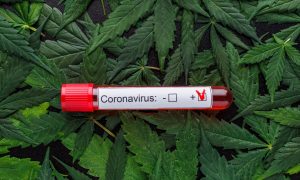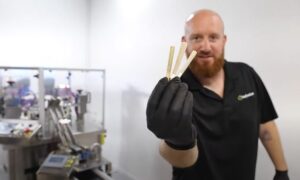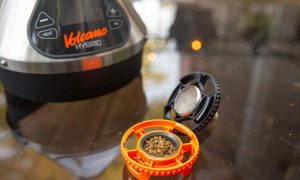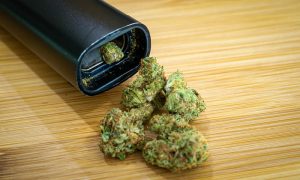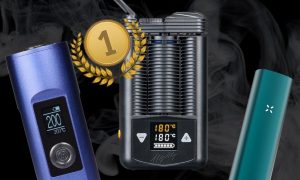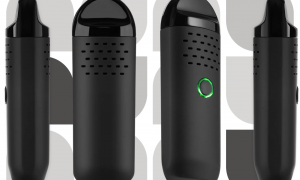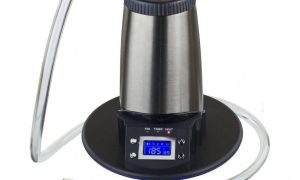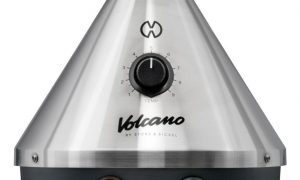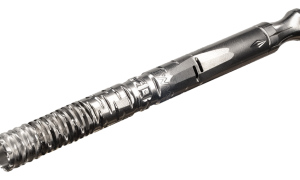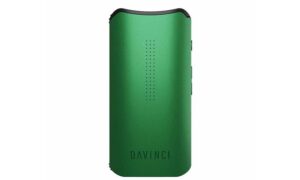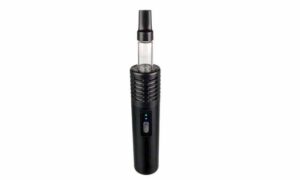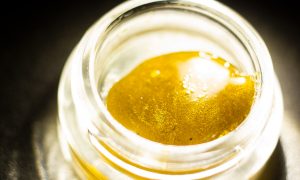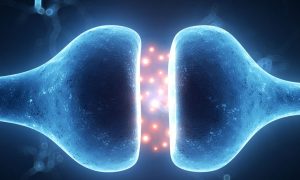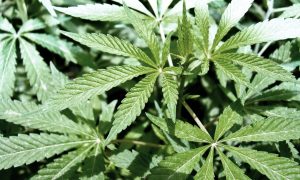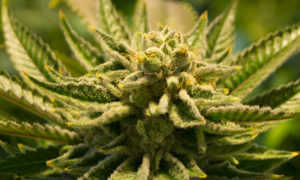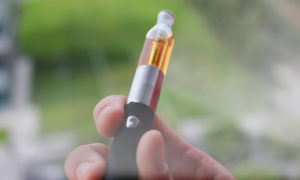You may have come across the term cannabinoid recently (it’s certainly a popular conversation in the medicinal weed circles) and been stuck nodding along thinking “what the fuck is a cannabinoid?”
Though it’s obvious that cannabinoids have something to do with cannabis, there seems to be a lot of confusion about what they actually are.
So without further ado, here’s our guide to understanding cannabinoids:
What are they?
“Cannabinoids occur naturally in weed”
In the most basic sense, cannabinoids are what make weed what it is. They’re the chemical compounds in weed that get jiggy with the chemical compounds in your body and cause weed to have an effect on you. They’re the reason you get high when you smoke weed and they’re also the reason weed can help to heal certain illnesses and afflictions.
There are at least 113 cannabinoids found in weed and they all have a slightly different effect. Certain cannabinoids, like THC (Tetrahydrocannabinol), have a psychoactive effect, which is what makes you feel high. Other cannabinoids, like CBD, have more of a somatic effect, affecting the physical functions of your body.
“The effects of using weed come about when the cannabinoids from the plant interact with the cannabinoids in your body”
How do they work?
Cannabinoids occur naturally in weed in the form of phytocannabinoids. They also occur naturally in the human body in the form of endocannabinoids. The ones found in the human body are produced in something called the endocannabinoid system, which is responsible for functions like sleep, movement, appetite and emotion (go figure, huh?).
The effects of using weed come about when the cannabinoids from the plant interact with the cannabinoids in your body. Inside the endocannabinoid system are specific cannabinoid receptors just waiting for those plant cannabinoids to come get jiggy with them.
There are two different types of cannabinoid receptors. The first, CB1, is mainly found in the brain and central nervous system; the second, CB2, is mainly found in the immune system.
“THC is the most psychoactive compound in weed and it’s the reason you get high when you smoke”
Once the cannabanoids enter your body, they attach to these receptors, activating the endocannabinoid system and affecting it in different ways depending on the particular cannabinoid.
Common Cannabinoids
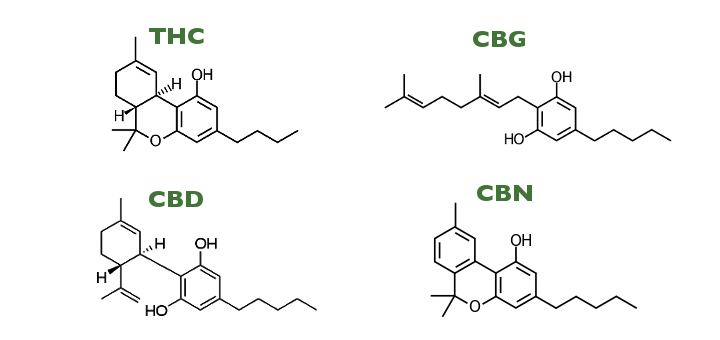
Common cannabanoids chemical composition c: leaf science
Tetrahydrocannabinol (THC)
That’s right: THC, the magical ingredient that everybody talks about when they talk about weed is none other than a cannabinoid. It’s the most psychoactive compound in weed and it’s the reason you get high when you smoke. However it’s also responsible for some of the less desirable effects of smoking weed. Although often seen as the most important cannabinoid, high levels of THC are more likely to produce paranoia, anxiety and psychosis. Alongside the psychoactive effects, THC also has some medicinal applications, such as pain relief and appetite stimulation.
Cannabinol (CBN)
Cannabinol is created from THC when it’s exposed to air. It has a mildly psychoactive effect on its own, but when combined with THC can make you feel drowsy and induce sleep.
Cannabidiol (CBD)
CBD is the second most common cannabinoid. It doesn’t have any psychoactive effect, but it has been shown to improve mood and alleviate pain. There has been a lot of interest lately regarding CBD’s antipsychotic effect on slowing the central nervous system and studies suggest that it could be used to treat schizophrenia, epilepsy and other ailments. CBD is at the heart of medicinal cannabis conversation in Australia with proposals for medicinal cannabis programs focusing on producing cannabis with high CBD content and minimal THC.
Cannabigerol (CBG)
Cannabigerol is a non-psychoactive compound that serves as the building block for THC and CBD. It has been found to reduce intraocular pressure, making it a good treatment for ailments like glaucoma.
So there you have it. For more in-depth information about how the endocannabinoid system works, check out the video below.




